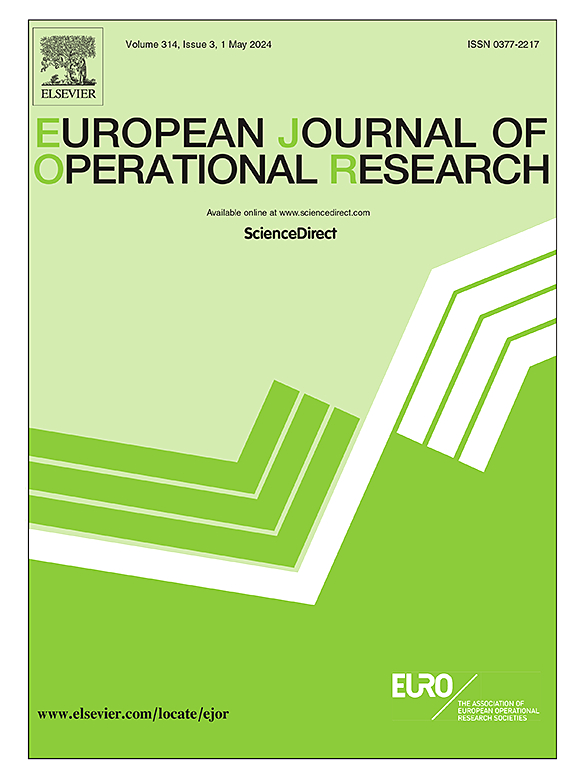车辆路线问题与取货,交付,和计划路线运输
IF 6
2区 管理学
Q1 OPERATIONS RESEARCH & MANAGEMENT SCIENCE
引用次数: 0
摘要
我们研究了在一个多仓库设置的联合收集和分配少于卡车装载的货物。仓库之间的线路允许增加货物合并,节省成本和温室气体排放。然而,为了实现这些好处,线路运输必须与从仓库收集和分发产品的每日取货和交付路线相协调。这些路线受到装载限制,根据车辆的分配和收集负载限制取货和交付。在与一家主要的欧洲物流供应商的合作中,我们将这个问题定义为车辆路线问题,包括取货、交付和预定线路运输。我们提出了一个集合覆盖公式,并通过一种新的受限主启发式算法来解决这个问题,其中相关的标记算法有效地结合了生成的路线和相关线路的出发时间之间的时间同步。此外,我们开发了一种自适应大邻域搜索(ALNS)算法,可以快速找到高质量的解。ALNS还填充路由集,并在受限的主启发式中提供初始解决方案。计算结果表明,对于多达45个客户的实例,使用ALNS执行的受限主启发式算法相对于根节点的线性松弛只有0.04%的间隙。我们的行业合作伙伴进行的一项基于24天作业的案例研究表明,我们的方法可以节省高达17.4%的成本。此外,我们还探讨了每个仓库实施服务区域限制的影响,这是一种常见的行业实践,通过将问题转换为单个仓库变体来简化操作。我们的研究结果表明,这导致平均成本增加4.9%。本文章由计算机程序翻译,如有差异,请以英文原文为准。
The Vehicle Routing Problem with Pickups, Deliveries, and Scheduled Linehauls
We study the joint collection and distribution of less-than-truckload freight in a multi-depot setting. Linehauls between the depots allow for an increased freight consolidation, saving cost and greenhouse gas emissions. However, to realize these benefits, the linehauls must be coordinated with daily pickup-and-delivery routes from the depots to collect and distribute products. The routes are subject to loading constraints, which restrict pickups and deliveries based on the vehicles’ distribution and collection loads. In collaboration with a major European logistics provider, we define this problem as the Vehicle Routing Problem with Pickups, Deliveries, and Scheduled Linehauls. We propose a set-covering formulation and solve this via a novel restricted master heuristic where the associated labeling algorithm effectively incorporates the time synchronization between the departure times of generated routes and associated linehauls. Moreover, we develop an adaptive large neighborhood search (ALNS) algorithm that finds high-quality solutions quickly. The ALNS also populates the route sets and provides initial solutions within the restricted master heuristic. Computational results show that for instances with up to 45 customers, the restricted master heuristic enforced with the ALNS finds solutions with only a 0.04% gap relative to the linear relaxation at the root node. A case study at our industry partner based on 24 days of operations reveals that our methods can save up to 17.4% of costs. Additionally, we explore the impact of implementing service area restrictions per depot, a common industry practice that simplifies operations by transforming the problem into single-depot variants. Our findings show that this results in an average cost increase of 4.9%.
求助全文
通过发布文献求助,成功后即可免费获取论文全文。
去求助
来源期刊

European Journal of Operational Research
管理科学-运筹学与管理科学
CiteScore
11.90
自引率
9.40%
发文量
786
审稿时长
8.2 months
期刊介绍:
The European Journal of Operational Research (EJOR) publishes high quality, original papers that contribute to the methodology of operational research (OR) and to the practice of decision making.
 求助内容:
求助内容: 应助结果提醒方式:
应助结果提醒方式:


